What Is Document Review?
As litigators handling lawsuits and investigations and as those who support them, we need to find "relevant documents": We need to locate key information supporting, refuting, or clarifying issues, events, and theories of the case.
Historically, we sought to get at key information via written discovery requests such as interrogatories and requests for admission. We elicited information from individuals, interviewing them, deposing them, and and having them testify at hearings and trials. We conducted physical and mental examinations of people as well as physical examinations of objects. And we evaluated the contents of paper documents.
While we still use all those tools, these days mostly we search for key content in electronically stored information (ESI). When we do that, we call it "document review".
Doc review has been around for as long as there have been documents, lawyers, and lawsuits and investigations. What documents we review and how we review them, however, has changed considerably in recent decades. As a newly-minted lawyer in the 1980s, my initial experiences with document review, typical for the time, boiled down to this:
- Small cases: A partner would call me into his office (partners were mostly men). He would slide some pleading across his desk, materials I was to read to glean an understanding of the case such as the complaint, the answer, and perhaps motion papers. He would give me the other side's written discovery requests. He would hand me anywhere from a folder's to a box's worth of hard copy paper documents gathered from the client. Then he would tell me the highlights the case; describe what to look for; give me a deadline, an estimate of how much time to spend, and a billing code; and send me on my way. If I were lucky, there would be a paralegal to help out and to guide me.
- Big cases: Similar to small case but many more people, many more documents, much more to look for, and yet not a whole lot more in the way of structure or systems.
Fast forward to 2021, and today we have an entire industry focused on the review of electronic documents. Many law firms and corporate legal departments have litigation support and electronic discovery specialists and teams. LSPs (litigation support providers) and ALSPs (alternative legal service providers) abound, many with vast teams of legal professionals and often with a national or international reach. Software providers such as Reveal offer entire platforms designed to enable and support the review of documents.
Guidance about what document review is and how to conduct it now is readily available and comes from many directions. The Sedona Conference has published a wide-ranging body of materials, starting with The Sedona Principles, now in their third edition. EDRM's eponymous EDRM diagram, first published in 2006, is used worldwide. The Federal Rules of Civil Procedure have been extensively revised twice, first in 2006 and again in 2015, to shine a spotlight on eDiscovery. Certifications are available, such as the Certified E-Discovery Specialist (CEDS) Certification from ACEDS and product certifications from Reveal which include the Reveal Review Certification that teaches the fundamentals of document review in Reveal.
What is Document Review, Really?
The basic goal of a document review project is to examine content, looking for key pieces of information. We use those pieces of information throughout the life of a lawsuit or investigation. They can inform how we prepare or answer a complaint. They help us decide what questions to ask, whether we are talking with a potential witness, finding out where a custodian might have stored information, or conducting a cross examination at trial. They help us construct stories and narratives, because without a story to tell - and one backed by evidence - you will not get far convincing a judge or jury of the merits of your case or a governmental agency of the diligence of your investigation.
The Content We Review: Types of Files
For the most part, when we talk about "document review", the "documents" we are reviewing consist of electronically stored information, or ESI. ESI encompasses pretty much any data that might be contained in a computer file or stored in a computer or on a drive. Common examples of document review are:
- Email messages and attachments to those message
- Other form of stored electronic communications such as chat or test messages and voicemail files
- Productivity files such as word processing documents, spreadsheet files, and PowerPoint or similar presentations
- Audio and video content stored electronically, everything from photos on a mobile phone to body camera footage
- Loose files of all sorts
- Databases
We also still need to work with paper. In matters of any significant size, paper generally is scanned and the resulting electronic files are loaded into the same platform used to review ESI.
The Content We Review: Components of Files
For document review, at some point we need to be able to examine just about every aspect of the ESI available to us. Unlike paper, whose content is limited to what you see on the page before you, ESI can have many components. Those components can includes content that is readily available to us such as text, pictures, both static and dynamic, and sound. The components also can include content that may not be obvious to us, metadata, for example, or hidden columns in a spreadsheet, or file fragments remaining on a hard drive.
Text
Text is content we as humans normally see when we look at a computer file on a screen, such as the words we see in the body of an email message. When reviewing documents, we want to be able to work with that text in a documents - search the text, use that text with active learning, redact it, and so on.
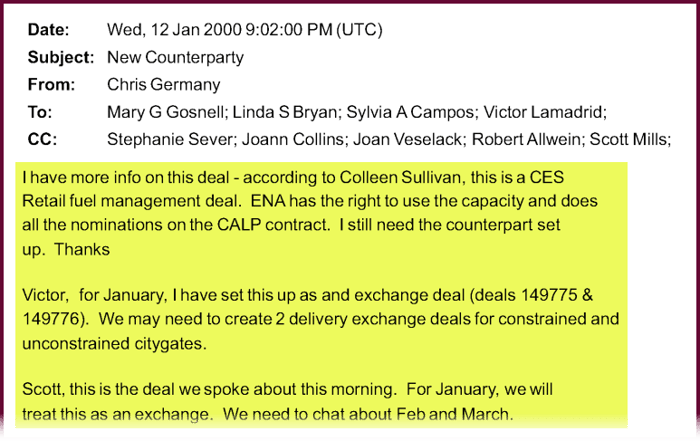
Not all text in a matter is necessarily in just one language. As a result, it helps to have the ability, directly within the platform, to translate content from one language to another.
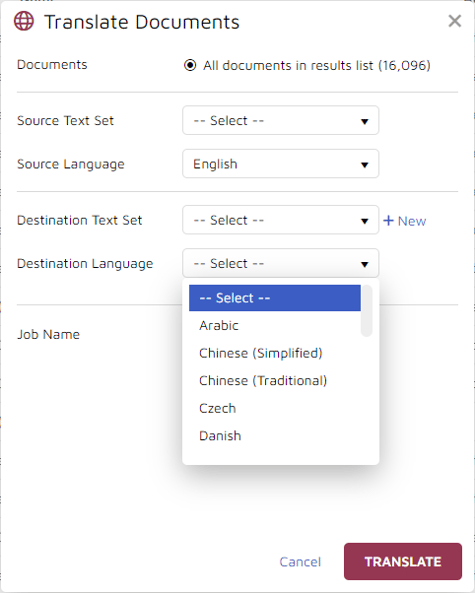
Metadata
We should be able to work with a file's metadata. Metadata is data about data. In an email message, this could be the time an email message was sent. In a word processing document, metadata might include the name of the computer on which the file was created.

You want to be able to do much more that just see metadata. As someone reviewing and analyzing content, you want ready access to metadata in a structured way. You should be able to display fields of metadata, for example.
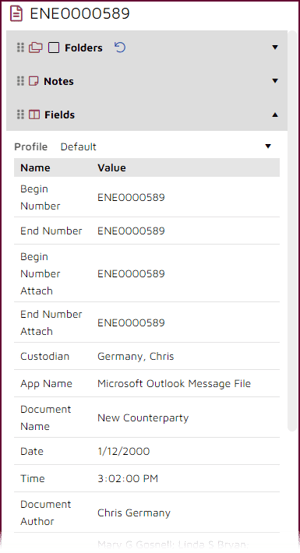
You also should be able to search and filter data by metadata.
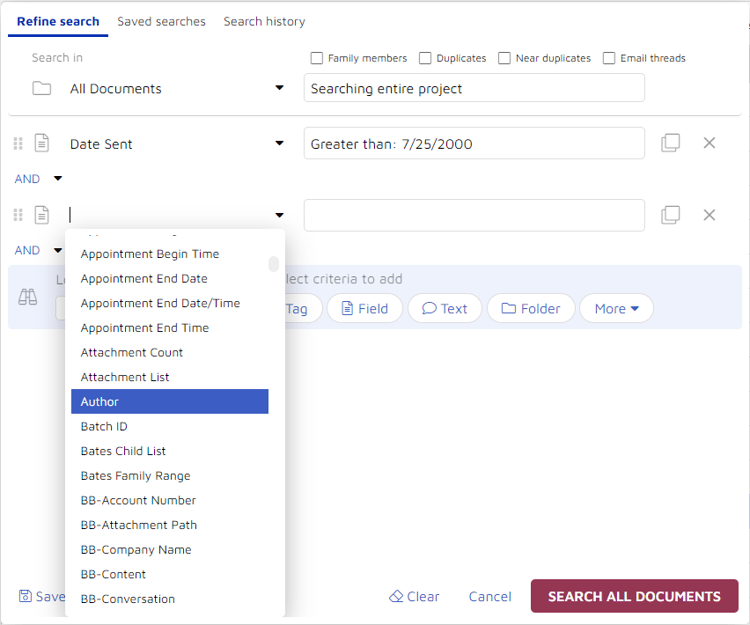
Pictures
More than ever, pictures are part of the ESI that we collect and need to review. You should be able to allow document review attorneys to search for pictures by file type (.png, .jpg, etc.), search for visual content within pictures (in the example below, search for "pipeline" and get search results back like the one below), and view and work with pictures directly in the review platform.
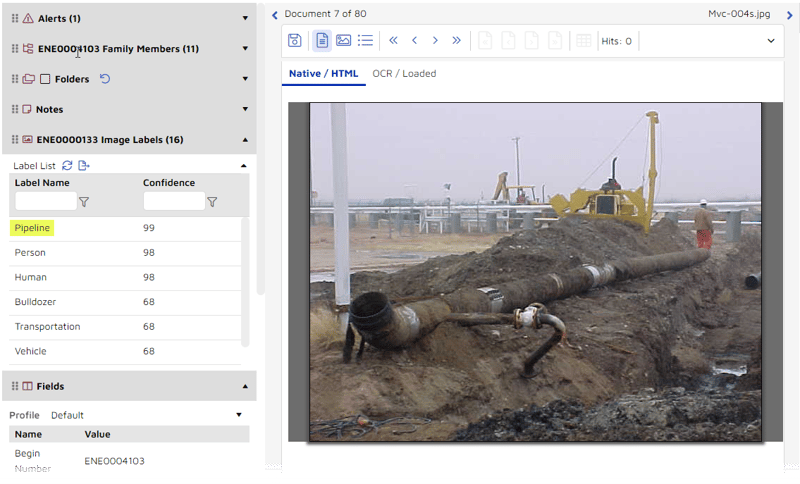
Audio and Video
Audio and video files are more common than ever, and you should be able to enable your legal document reviewers to work with the content of those files. With your review software, you should be able to transcribe audio content, play both audio and video directly in the review tool, and have the transcribed text automatically scroll along with the playback of the audio.
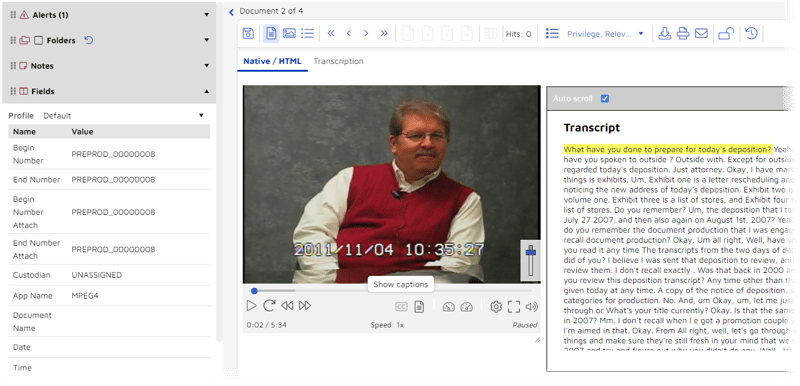
Who Reviews Documents
Who reviews documents varies greatly. On a small matter, maybe only a small number people would likely to set eyes on documents - the attorney handling the case, the paralegal working alongside that attorney, perhaps an administrative assistant.
At the other extreme, on a large matter hundreds of people might participate in the review. In those situations, review teams are common deployed. These teams consist of various combinations of document review attorneys and non-attorney reviewers (anywhere from an handful to hundreds), second-level reviewers, privilege reviewers, subject matter experts, quality assurance and quality control personnel - and the list goes ones.
Law firm trial and investigative teams also play a key role. These teams also can include a range of people: lead and additional trial attorneys; relationship partner; a lieutenant attorney there as a manager for the entire matter; lawyers working with witnesses, both factual and expert.
Law firm support personal also can be involved in various aspects of review. Litigation support and eDiscovery directors and managers can participate in everything from determining which review platform get used, to who uses the platform and how. Trial support personnel could help present documents at trial, sometimes with the same tools used for review, and might have to be in the review tool at 3 am, searching for newly-important documents to be used at 9 am with that day's first witness.
Each of these categories of people may find themselves engaged in some aspect of document review work at some point during the life of a matter. And with their different perspectives and objectives, each category of people is likely to want to use review software in a somewhat different way.
Additional Resources
For more information about topics discussed above, see:
- AI Image Recognition: The eDiscovery Feature You Didn't Know Existed
- Are You Spending Too Much For Foreign Language Document Review?
- How Many Hurdles are in Your Foreign Language Document Review Process?
- How to Buy Legal Discovery Software Like a Pro
- Image Recognition and Classification During Legal Review
- Legal AI Software: Taking Document Review to the Next Level
- The eDiscovery Processing Software Buying Guide
Document review is an eDiscovery process that attorneys and staff engage in, formally or informally, in any matter on which they work which involved documents - and that means just about every matter they handle. It is a critical part of what we do to find out what happened in a matter, whether investigation or lawsuit, whether large or small, whether staffed by two people or two hundred.
If your organization is interested in learning more about how Reveal's AI-powered end-to-end document review platform can fit your review needs, contact us to learn more.

